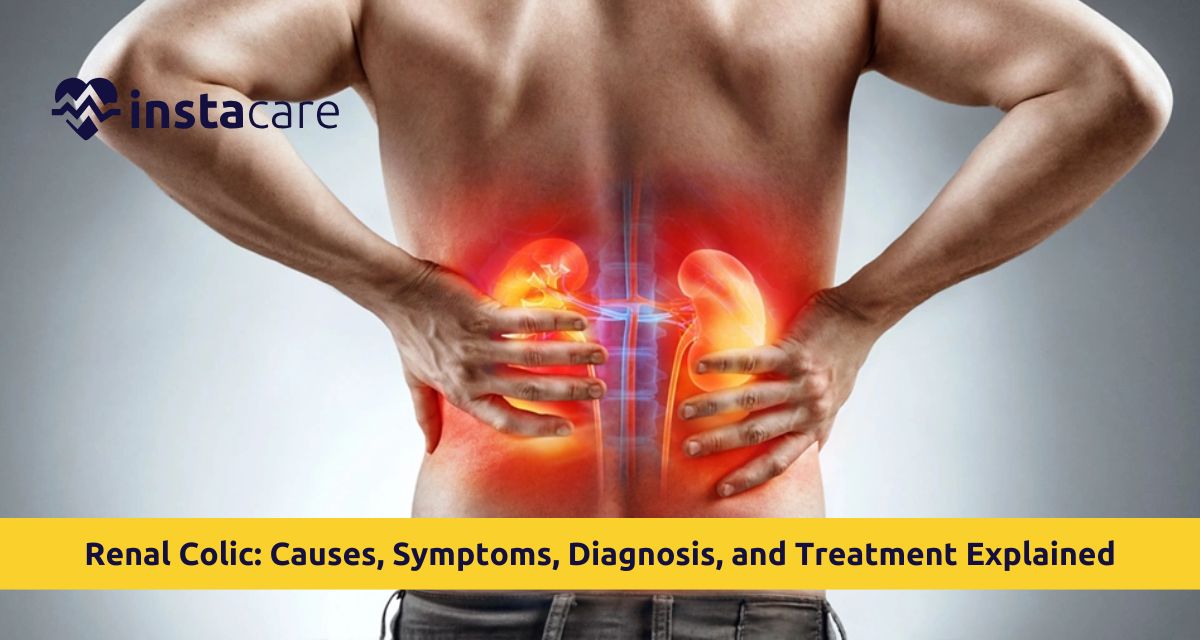What Is Renal Colic?
Renal colic is the acute onset of paroxysmal pain of urinary tract obstruction, usually due to renal stones. Renal colic pathophysiology is immediate obstruction of the flow of urine that increases ureter and kidney pressure. Increased pressure causes forceful spasms of renal pelvic and ureteral smooth muscle that produce characteristic waves of painful agony. Acute renal colic prefers to start suddenly and persist from a few minutes to a few hours and usually calls for immediate medical attention.
Causes of Renal Colic
The causes of renal colic are exactly the urinary tract obstructions:
- Kidney Stones: The connection of kidney stones and renal colic is not hard to understand renal colic in about 80% is secondary to nephrolithiasis. Stone formation is a result of mineral concentration such as calcium, oxalate, or uric acid in the urine and precipitation out. Stone chemistry is varied but the majority are calcium oxalate, followed by uric acid, struvite, and cystine stones.
- Blood Clots: Hematuria (urine within the blood) will clot and cause urine obstruction with colicky but less frequent renal colic pain than that caused by kidney stones.
- Urinary Tract Infections: Repeated obstruction and secondary pain can be caused by chronic infection that provides debris or inflammatory tissue.
- Tumors: Although rare, tumors of the urinary tract have the potential to cause obstructed urine flow with associated symptoms of renal colic.
- Structural Abnormalities: Obstruction or stricture at ureteropelvic junction level is congenital in nature and predisposes one to repeated attack.
Risk factors include familial recurrence of renal stones, dehydration, excessive sodium or protein diet, obesity, and drugs.
Symptoms of Renal Colic
Presentation of renal colic is characteristic and usually is not masked. The differential sign is the acute, stabbing flank pain that starts in the back below the ribs and radiates to the groin and genitalia. Renal colic vs flank pain differential diagnosis needs to be made—renal colic is wavelike, colicky pain, with relief and recurrence, but plain flank pain is persistent.
Other symptoms of renal colic:
- Nausea and vomiting
- Hematuria (blood, red or pink appearance of urine)
- Urgency and frequency of urination
- Spasm of urination (dysuria)
- Can't get comfortable
- Chills and fever (suggesting infection)
Renal colic in pregnancy conditions can mimic renal colic symptomology, and imaging that occurs in diagnosis is restricted due to caution for fetal safety.
Diagnosis of Renal Colic
Renal colic diagnosis starts with general clinical assessment. Pain quality, painful area, and associated symptoms are assessed by the doctor during history taking. Renal colic differential diagnosis of first priority is appendicitis, ectopic pregnancy, ovarian torsion, diverticulitis, and abdominal aortic aneurysm. Successful diagnosis falls under differential diagnosis.
Tests used are:
- Urinalysis: Checkup of blood, crystals, infection, and pH imbalance pointing to composition of stone.
- Blood Tests: Assess renal function with creatinine and blood urea nitrogen measurement, level of electrolyte, and for infectious markers.
- Imaging Studies: The best imaging study for diagnosing renal colic is the non-contrast CT scan as it will give the most accurate size, location, and density of the stones. Ultrasound can be an alternative radiation-free method in pregnant patients and children.
Read More: Renal Function Test (RFT): Types, Normal Ranges, and Kidney Health Insights
Treatment and Pain Management
Renal colic treatment involves the relief of pain immediately and the removal of the obstruction. Renal colic management is treated based on the size of the stone, its position, and the severity of the symptoms.
- Relief of Pain: Alleviation of renal colic pain relief is usually achieved by potent medication. Nonsteroidal anti-inflammatory drug such as ketorolac is administered for pain relief and relief of inflammation. Opioids are administered in severe cases. Antiemetics are administered to treat vomiting and nausea.
- Drugs for Renal Colic: Alpha-blockers like tamsulosin relaxes the muscles of the ureter, making it easier for the stones to pass. This expulsive medical treatment significantly enhances spontaneous passage rates for stones smaller than 10mm in diameter.
- Hydration: Adequate fluid intake helps the passage of stones through the urinary tract, though lots of fluid at the time of an attack would make them more tolerable.
- Surgery: Surgery is indicated in the event of stones larger than 10mm in diameter or complex stones. Treatment options include extracorporeal shock wave lithotripsy (ESWL) as a treatment to utilize the sound waves to shatter the stones; ureteroscopy and laser lithotripsy to shatter the stones intraluminally; and percutaneous nephrolithotomy in the event of large kidney stones.
- Home Management of Renal Colic: In addition to the best expert treatment, renal colic home remedies include heat over the area, mobilization instead of rest, and fluids after the pain has passed.
Complications of Untreated Renal Colic
Untreated renal colic is very severe. Later obstruction may cause hydronephrosis—increased kidney size due to urine reflux—resulting in permanent renal damage. Urine stasis invites infection, and in the case of infection and obstruction occurring together, onset of potentially fatal urosepsis can occur quite precipitously. Secondary acute renal failure due to bilateral obstruction necessitates urgent therapy.
Prevention of Renal Colic
Renal colic prevention is prevention of kidney stone formation. 2-3 liters of fluid intake per day dilutes urine and prevents the formation of crystals. Restriction of sodium diet, alteration of animal protein intake, and exclusion of diet rich in oxalate such as
spinach and nuts by patients with high risk are some of the medical dietary interventions. Calcium as a health food has a paradoxical action of combining with the ingested oxalate to precipitate out in the form of insoluble calcium oxalate and thus prevents stone formation.
In a patient with chronic stone disease, analysis of 24-hr urine allows some of the risk factors to be identified and thus directed prevention can be achieved. Certain renal colic medications such as thiazide diuretics, potassium citrate, or allopurinol can be given depending on the composition of the stone and metabolic derangement.
Conclusion
Renal colic is an acute process that warrants urgent evaluation and treatment. Etiology, early symptomatic diagnosis, and early intervention by information gathering prevent complications and maintain renal function. In spite of excruciating pain, the application of current therapy is effective in symptom control and stone passage. Proper preventive measures such as fluid intake and diet modification enable most patients to considerably reduce their risk of recurrence and have healthy urinary tracts.
Please book an appointment with the
best Urologist in Lahore, Karachi, Islamabad, and all major cities of Pakistan through
InstaCare, or call our helpline at 03171777509 to find a verified doctor for your disease.

